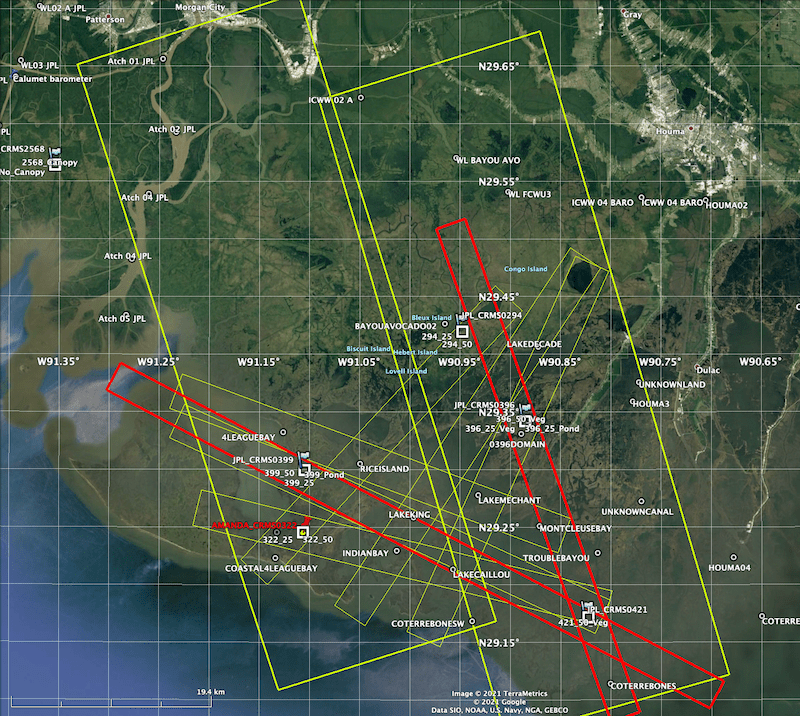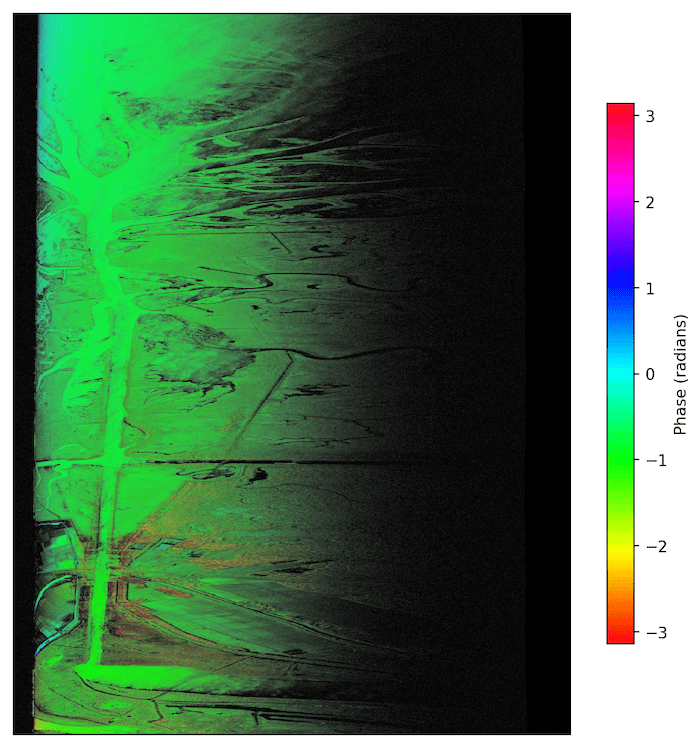< Blog
April 6, 2021
First AirSWOT interferograms
By Marc SimardWe had three aircraft in the air again today and three field teams on the ground collecting data over the Terrebonne West area.
 Today's flights: UAVSAR lines flown 8 times each (big yellow boxes), AVIRIS-NG lines flown 2 times each (red boxes), and AirSWOT lines flown 3 times each (small yellow boxes)
Today's flights: UAVSAR lines flown 8 times each (big yellow boxes), AVIRIS-NG lines flown 2 times each (red boxes), and AirSWOT lines flown 3 times each (small yellow boxes)
- UAVSAR collected 16 lines.
- AirSWOT collected 3+ repeats of all 6 planned lines. The LSU team was at site 421 measuring flow velocity along transects at 1130-1200 and again 1600-1630. While they recorded very low surface flow, the tide level did change by about 4” inches over the site. We will see in October if that was recorded by the water level gauges installed prior to flight campaign.
- AVIRIS-NG collected Terrebonne water quality (WQ) priority lines A & B twice, while the Water Quality Team collected samples and made radiometry measurements at site 399. The first AVIRIS-NG collection had some clouds over the site, but on the second pass the sky was clear.
AVIRIS-NG has now collected all vegetation lines, all Atchafalaya WQ lines (2+ tidal conditions), and Terrebonne West WQ lines on two days, both with the WQ team making concurrent measurements.
Congratulations to Michael Denbina who successfully processed the first AirSWOT interferograms for 03/26 and 03/27. Michael has been working tirelessly over the past few months on improving the AirSWOT processor following the instrument upgrade. AirSWOT had several calibration flights before the Delta-X campaign. Thanks Michael.
 AirSWOT backscatter image
AirSWOT backscatter image
 AirSWOT interferogram image
AirSWOT interferogram image
- And also thanks to Roger Chao, Peter Wu and Ian Mccubbin for their hard work making the hardware upgrade happen. Your work bore the attached fruits.
- These AirSWOT interferometric measurements will provide water surface elevation and spatially continuous slope along channels and various part of the flood plain, as the tidal wave propagates inland and back to the Gulf. These measurements will serve, along UAVSAR measurements, to constrain Delta-X hydrodynamic models and calibrate input parameters.

